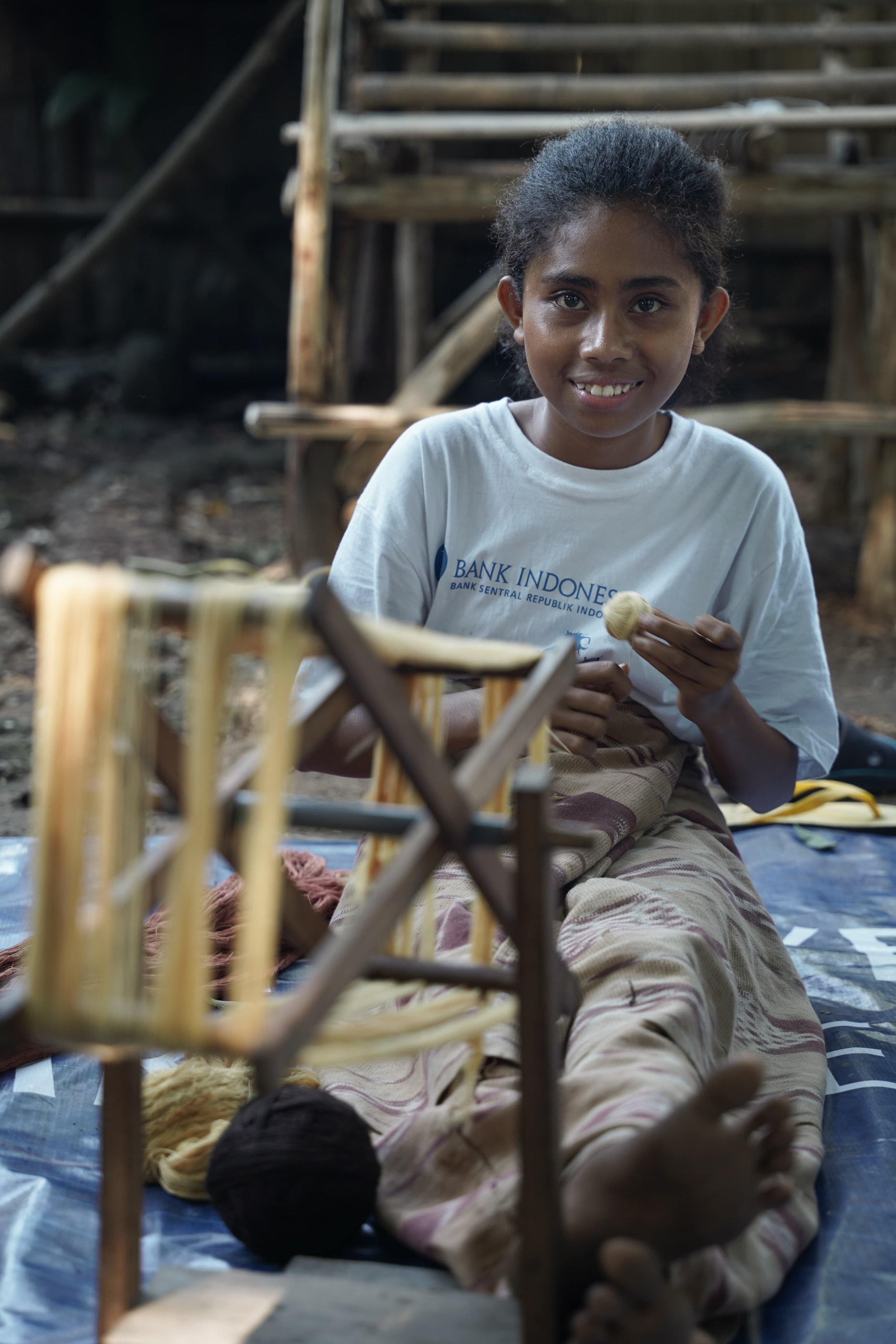Meet the Weavers
of Karaja Sumba
Our weavers are the ones who drive Karaja. It is their skilled hands that create our signature ikats, introduce you to the magic of natural dyeing or help organisations repurpose their old textiles. We value each of them as an equal part of the Karaja family.
Just as the process of ikat weaving is a collaborative one, we all support each other on this wonderful journey, one thread at a time.
Scroll down to get to know them one by one.
"Weaving and spinning cotton has been my daily work since I was little. I grew up doing it and it helps me survive as a single mother. I weave life and hope for my children. Weaving is the way I can express my belonging to my ancestors and my mother nature.”
Part from Karaja since 2019
Kampung Letahakapuna
Inya Goro - 69 years old
Kampung Letahakapuna
Yuliana Holi
Kampung Letahakapuna
Agus Lere
Kampung Letahakapuna
Yustin
Part of Karaja since 2019
Kampung Letahakapuna
Paulina Nodu - 53 years old
“I do not weave just threads. I weave a story for my children and grandchildren”.
"Making Ikat is not common for men, especially not in my village. But I have decided to help my wife make the patterns, and I have been doing it for 20 years. This helps me to spread equality among the people of Lamboya and give my children a higher education while preserving the value of the ancient culture”.
Kampung Letahakapuna
Yohanes - 50 years old
Kampung Letahakapuna
Luna Maga
“Weaving and making patterns is not only a way to fulfil my daily needs, but also the way I talk to my mother, who passed away in 2022. I want to make her proud through her creative work."
Kampung Letahakapuna
Yuliana Rangu - 20 years old
“I dream of becoming an English teacher, but my passion is weaving and dyeing. I want to encourage more young Sumbanese to be proud of their ikat'.”
Kampung Letahakapuna
Sintia Lere
Kampung Letahakapuna
Marta
Kampung Letahakapuna
Maria Toda
“I am creating another legacy by weaving and dyeing to see my youth through this modern era while contributing to my dear Lamboyan community.”













